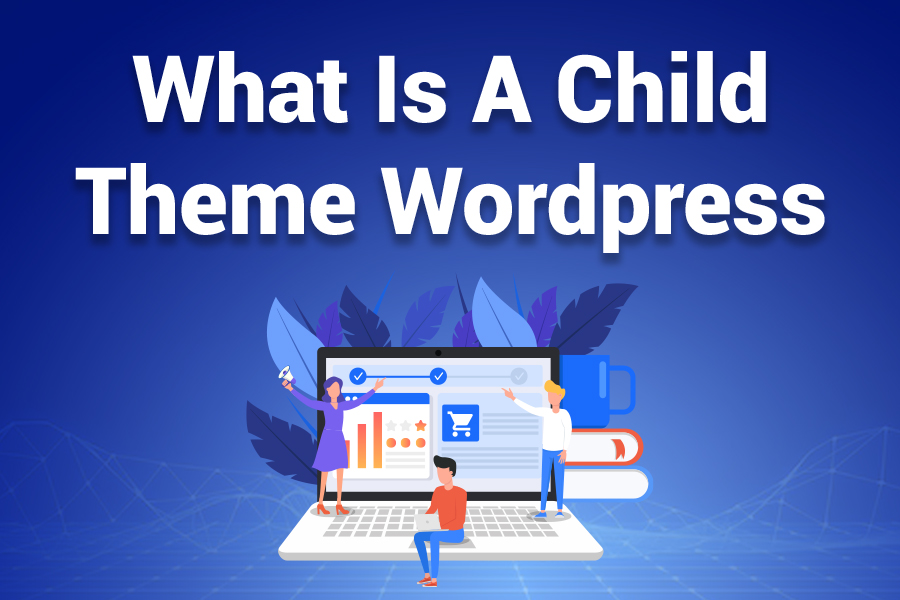
When exploring customization in WordPress, one of the most common questions new users ask is: what is a child theme WordPress? A child theme is essentially a “theme within a theme,” allowing you to modify design and functionality without directly altering the parent theme’s core files.
This setup is essential because updates to parent themes can erase custom changes. With a child theme, your modifications remain safe even after updates. Developers and site owners use child themes to experiment with layouts, add features, or style sites uniquely, while still relying on the parent theme’s stability. Understanding how they work—and how to create one—is crucial if you want a secure, future-proof site.
What Is a Child Theme WordPress?
A child theme in WordPress is a theme that inherits features from a parent theme but allows safe customizations. It ensures updates don’t erase edits, making it ideal for developers and site owners who want flexibility.
The Basics of a WordPress Child Theme
A WordPress child theme is designed to inherit the look and functionality of a parent theme while allowing developers to make safe edits. The parent theme provides the foundation—structure, features, and styles—while the child theme overrides or adds custom code. This structure avoids the common mistake of editing parent files directly.
For example, if you want to adjust the header design, you can copy the header file into the child theme and edit it without touching the parent. When the parent theme updates, your child theme remains intact.
This balance between flexibility and security is what makes child themes so popular. Beginners often wonder, what is a child theme WordPress, and the simplest answer is: it’s your safety net for design customization. Without it, every update risks undoing your work.
Why Developers and Site Owners Use Child Themes
Child themes in WordPress offer a smart way to customize a site without touching the original theme’s code. Developers and site owners use them to preserve updates, experiment safely, and maintain flexibility for future design changes.
Inheritance Without Risk
A child theme ensures you can tweak styling, add templates, or adjust code without breaking the parent theme.
Safe Updates
Because custom edits live in the child, parent theme updates won’t overwrite them, keeping your site secure and updated.
Learning Tool
New developers often use child themes to practice coding in WordPress. Since the parent theme provides structure, the child is a sandbox for safe experimentation.
Branding and Customization
Businesses use child themes to create unique designs while maintaining functionality from popular parent themes. This gives them a competitive edge without reinventing the wheel.
By understanding what is a child theme WordPress, site owners see why it’s a go-to method for combining security with personalization.
Common Misconceptions About WordPress Child Themes
People often misunderstand the role of child themes in WordPress.
- Child themes are only for developers – False. Even non-technical users can apply custom CSS or minor tweaks.
- They slow down websites – Incorrect. Properly coded child themes perform just as well as parent themes.
- Parent themes become useless – Wrong. A child theme relies on its parent; without it, the child won’t function.
- Child themes are mandatory – Not always. If you don’t plan on heavy edits, the parent theme may be enough.
- Every theme needs one – False. Lightweight customizations can sometimes be handled with plugins or custom CSS.
Knowing what is a child theme WordPress helps dispel these myths, showing its purpose is safety, not complexity.
Real-World Scenarios Using WordPress Child Themes
Consider a blogger who wanted to redesign her site’s sidebar. Instead of altering the parent theme’s files, she created a child theme, ensuring her changes stayed intact after updates.
Another case involved an online store using WooCommerce. The developer built a child theme to customize checkout layouts without touching WooCommerce’s core templates, allowing seamless updates later.
Corporate websites often rely on translation-ready features. When a parent theme lacked specific language tweaks, a child theme provided space to add translation files safely.
In a different case, a news site faced constant updates for security. A child theme allowed them to add custom styling while ensuring their content remained safe whenever the parent theme updated.
These examples highlight why understanding what is a child theme WordPress is vital for long-term site stability.
How to Create a Child Theme in WordPress
How to create a child theme in WordPress involves setting up a new folder, adding a style.css file, and linking it to the parent theme for safe customizations.
Step 1: Create a New Folder
Inside /wp-content/themes/, create a folder for your child theme, usually named after the parent with “-child” added.
Step 2: Add style.css File
Include a style.css file with details like theme name, template, and author. Reference the parent theme in the “Template” line.
Step 3: Add functions.php File
Use functions.php to enqueue styles. This ensures your child inherits the parent’s CSS and functions.
Step 4: Activate in Dashboard
Upload or select your child theme under Appearance > Themes, then activate it.
Step 5: Customize Safely
Copy files you want to change (header.php, footer.php, etc.) into the child theme folder and edit them.
By following these steps, you’ll know not only what is a child theme WordPress but also how to use it effectively.
Pros and Cons of Using Child Themes
- Pro – Safe Updates: Keeps changes intact when parent themes update.
- Pro – Flexible Customization: Add features, CSS, and PHP edits freely.
- Con – Learning Curve: Requires some coding knowledge.
- Con – Parent Dependency: The parent must remain installed and functional.
- Balanced View: Child themes aren’t for every user, but they’re invaluable for long-term customization projects.
Knowing what is a child theme WordPress helps site owners weigh these benefits and drawbacks before deciding to create one.
Preventing Problems When Using WordPress Child Themes
Preventing problems when using WordPress child themes means keeping parent themes updated, limiting excessive edits, and testing changes on staging sites to maintain stability and long-term security.
Keep Parent Updated – Always update the parent theme for security patches.
Avoid Excessive Tweaks – Too many edits can make child themes harder to manage.
Back Up Files – Always back up child and parent themes before big updates.
Test on Staging Sites – Make major changes in a staging environment first.
With these precautions, you’ll not only understand what is a child theme WordPress but also use it effectively without introducing long-term risks.
Conclusion
So, what is a child theme WordPress? It’s a safeguard that lets you customize design and functionality without losing your work when parent themes update. Equal parts learning tool and professional necessity, child themes make it possible to balance creativity with stability. For bloggers, businesses, and developers, the value lies in future-proofing your website. By setting one up correctly, testing changes on staging sites, and backing up files, you ensure smooth performance without fear of breaking your site. Ultimately, child themes empower you to build confidently while keeping the focus on growth and user experience.
FAQs
Do I always need a child theme?
Not always. If you only use minor CSS edits, customizers or plugins may be enough.
What happens if I delete a child theme?
Customizations vanish, but the parent theme still runs. Always back up your child before removal.
Can child themes slow down my site?
No. Properly coded child themes inherit parent efficiency without affecting speed.
Is coding knowledge required for child themes?
Basic HTML/CSS helps, but many guides and plugins make setup simple.
What’s the main benefit of a child theme?
It preserves customizations during parent updates, providing flexibility and stability for your website.





